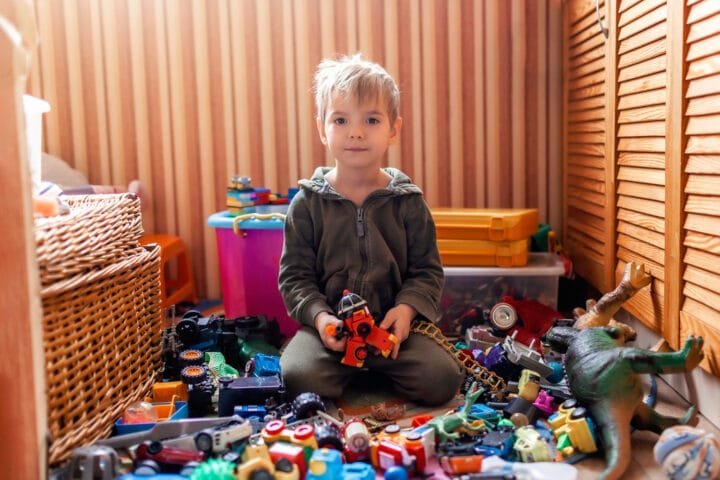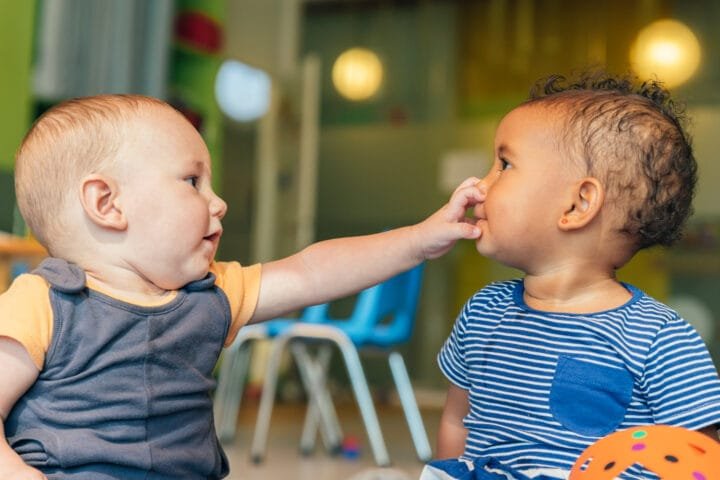Reading as a Foundational Skill
Reading is essential for children’s development, especially in their early years. It supports academic success, cognitive development, communication skills, and creativity. Learning to read helps children gain greater insight and interaction with the world. Reading enhances critical thinking, problem-solving, and analytical abilities while strengthening memory, concentration, and language comprehension, ultimately increasing communication abilities and strengthening social interactions.
Reading allows the exploration of different experiences and cultures, developing empathy and emotional intelligence. Children’s books encourage imagination and creativity by exploring various worlds and ideas.
Early reading fosters a lifelong love of learning. Reading age-appropriate books can pique curiosity and instill a passion for knowledge; positive reading experiences provided by parents or educators can build enjoyment and pride among young readers.
Understanding when do kids learn to read and why children begin reading can assist parents and educators in supporting this pivotal stage in a child’s development, setting them on their lifelong learning and growth journey. Knowing when do kids learn to read also helps caregivers tailor their approach to each child’s unique needs.
Early Literacy Development: Language Exposure and its Role
A child’s early literacy development is critical to their growth and reading ability. Language exposure from infancy sets the foundation for future reading success through verbal interactions between children and caregivers, helping them comprehend vocabulary, syntax, and phonetics.
Communication from birth offers many advantages. Simple conversations, singing, and playtime with parents help infants recognize sounds and speech patterns, creating a basis for literacy. Reading aloud to children introduces story structures, expands vocabulary, and teaches the rhythm of language, making reading sessions enjoyable and educational.
An environment rich in language can significantly aid a child’s reading development. It includes having plenty of books available, using diverse vocabulary in stories, and encouraging curiosity through conversation. Each interaction serves as a building block towards later reading skills.
Parents and caregivers are essential in supporting their child’s literacy journey by creating an enriching language-rich environment. While children learn to read at different ages, early exposure and regular interaction with language significantly increase readiness to read. Understanding when do kids learn to read helps create these enriching environments and effectively support their literacy journey.

When Do Kids Learn to Read?
Children typically begin learning to read between the ages of 3 – 7, when most show cognitive and emotional readiness. However, each child’s timeline can differ widely. Recognizing these variances is essential as they don’t predict future academic success or intelligence.
Various indicators suggest when children are ready to begin learning to read:
- Interest in Books: Eagerness to handle books, look at pictures, and mimic reading behaviors.
- Letter Recognition: Recognizing letters of the alphabet and their associated sounds.
- Phonemic Awareness: Understanding basic phonemic concepts like rhyming words or initial sounds of words.
- Attention Span: Ability to pay attention and engage with a story, showing comprehension and interest.
- Story Retelling: Ability to follow and retell a narrative.
- Fine Motor Skills: Capacity for holding books and turning pages efficiently.
Supporting Early Literacy
Parents and educators can foster early literacy by creating an environment that nurtures curiosity about reading with age-appropriate books that make reading sessions enjoyable and educational. Patience and encouragement are keys to teaching children how to read. Every child’s journey to reading differs, and an individualized approach ensures positive learning experiences, setting them toward future educational success.
Critical Competencies for Reading Readiness
Reading readiness is a critical developmental milestone dependent on mastering foundational skills such as phonemic awareness, vocabulary expansion, and letter recognition.
- Phonemic Awareness: The ability to hear, identify, and manipulate phonemes. Activities like rhyming games, clapping out syllables, and sound games can support this skill.
- Vocabulary Development: Learning and using a variety of words enhances comprehension. Reading aloud, discussing stories, and using age-appropriate books can foster this development.
- Letter Recognition: Identifying and naming both uppercase and lowercase letters. Alphabet puzzles, flashcards, and sensory activities like drawing letters in sand can make learning the alphabet fun.
Practical Activities to Foster Skill Development
Engaging in practical activities supports skill development while encouraging an enjoyment of reading:
- Storytime Discussions: Talking about what was read.
- Interactive Play: Engaging in games that use letters and sounds.
- Consistent Practice: Engaging in consistent letter recognition and phonemic awareness practice.
Encourage Reading at Home
Fostering reading can be challenging but is crucial for development. Here are some strategies:
- Create a Print-Rich Environment: Provide various reading materials and create a cozy reading corner.
- Establish Daily Reading Routines: Set aside consistent reading times each day. Encourage participation by asking questions and connecting the story to their experiences.
- Use Interactive Storytelling Techniques: Enhance reading experiences with expressive voices, gestures, and props.
Schools and Teachers as Contributors in Reading Development
Schools play a central role in children’s reading development, providing structured environments for learning. Early literacy skills are introduced in kindergarten, with more complex skills built upon in first grade. Teachers use assessment techniques to gauge reading ability and tailor instruction to individual needs.
Educational frameworks provide specific goals for each grade to ensure children meet developmental milestones on time. Teachers also offer support through intervention programs, small group sessions, and individual tutoring.
Addressing Challenges in Reading
Reading difficulties may surface at various stages. Early identification and intervention are crucial for adequate support. Signs of reading difficulties include trouble recognizing letters, decoding words, and frustration with reading activities.
Parents can employ various approaches, such as structured literacy programs and multisensory techniques, and seek help from reading specialists or speech-language therapists. Modern technology and community resources like library programs and after-school tutoring can also provide valuable support.
Recognizing When to Seek Professional Help
Persistent reading difficulties may require professional intervention. Signs that suggest additional support is necessary include ongoing trouble recognizing letters, decoding words, and frustration with reading activities.
Steps for professional evaluation include consulting a pediatrician, educational psychologist, and reading specialists. Early intervention increases the chances of overcoming reading difficulties and becoming successful readers.
Check out this awesome program: childrenlearningreading.com
Your child will be Reading To Learn, while other children are still Learning To Read.

Engaging and Educational Books for 3 and 4Year-Olds
Reading is a beautiful way to engage your child’s imagination and foster a love of learning from an early age. Choosing the right books for your child’s age and interests can make all the difference in creating a lifelong reader. Here are some carefully selected books for 3- and 4-year-olds that combine fun, education, and captivating storytelling.
Best Books for 3-Year-Olds
When selecting books for 3-year-olds, it’s important to find engaging and educational stories. Here are some top picks:
- The Very Hungry Caterpillar by Eric Carle
- This timeless classic uses beautiful illustrations and a simple story to teach counting and the days of the week. Children love following the caterpillar’s journey as it eats through various foods before transforming into a beautiful butterfly.
- Goodnight Moon by Margaret Wise Brown
- A soothing bedtime story that has lulled generations of children to sleep with its rhythmic text and gentle illustrations. It’s a perfect way to end the day and prepare your child for a peaceful night’s sleep.
- Where the Wild Things Are by Maurice Sendak
- This imaginative tale of adventure and discovery captures the wild spirit of childhood. The story of Max and his journey to the land of the Wild Things is thrilling and comforting, making it a favorite for many.
- Brown Bear, Brown Bear, What Do You See? by Bill Martin Jr. and Eric Carle
- A repetitive, rhythmic book that helps children learn colors and animal names. Its predictable pattern encourages participation and makes it an excellent choice for early readers.
- The Gruffalo by Julia Donaldson
- A delightful story about a clever mouse and a mythical creature, perfect for sparking imagination. The rhyming text and engaging plot make it a fun read-aloud book.
- Press Here by Hervé Tullet
- An interactive book that encourages kids to press, shake, and tilt the pages to see what happens next. This unique format makes reading a playful and engaging experience.
- Llama Llama Red Pajama by Anna Dewdney
- This charming story addresses bedtime fears with humor and warmth. Llama Llama’s antics and the comforting message will resonate with young children.
Best Books for 4-Year-Olds
Children’s ability to understand more complex stories and concepts expands as they grow. Here are some fantastic books for 4-year-olds:
- The Day the Crayons Quit by Drew Daywalt
- A humorous story about a group of crayons with distinct personalities who have grievances with their owner. This book is funny and thought-provoking, encouraging children to think about creativity and empathy.
- The World of Peter Rabbit by Beatrix Potter
- A collection of timeless tales featuring the beloved character Peter Rabbit and his friends. These stories are perfect for introducing children to classic literature.
- If You Give a Mouse a Cookie by Laura Numeroff
- A fun, circular tale about the chain reaction of events that ensue when you give a mouse a cookie. Its cause-and-effect storytelling is both entertaining and educational.
- We’re Going on a Bear Hunt by Michael Rosen
- An adventurous story with repetitive text and a rhythmic chant that children love to join in. This book is perfect for interactive reading sessions and dramatic play.
- Dragons Love Tacos by Adam Rubin
- A whimsical book about dragons who love tacos but need to avoid spicy salsa. Its silly premise and delightful illustrations make it a hit with kids.
- Caps for Sale by Esphyr Slobodkina
- A humorous tale of a cap peddler and some mischievous monkeys. This story’s repetitive text and playful theme are perfect for young readers.
- Don’t Let the Pigeon Drive the Bus! by Mo Willems
- A hilarious interactive story where children get to tell the pigeon “No!” as he tries to convince them to let him drive the bus. It’s an excellent book for teaching children about boundaries and making decisions.
Conclusion: Fostering an Interest in Reading
Establishing children’s reading abilities requires patience, support, and encouragement. Understanding when children learn to read provides valuable insight, but recognizing that each child’s journey is unique is crucial.
Parents and educators play essential roles in inspiring a child’s enthusiasm for reading by creating a rich reading environment, providing age-appropriate literature, and using adaptive teaching methods. The effects of early reading experiences last long after initial exposure, improving cognitive skills, comprehension, and empathy.
By creating an environment that celebrates reading and supports individual learning paths, parents and educators can help children cultivate a love of reading, setting the foundation for long-term learning and personal development.
If you’re curious about another important milestone in your child’s development, check out our post: When Do Kids Learn to Swim? What the Pros Don’t Want You to Know. It provides valuable insights that every parent should know!





































































